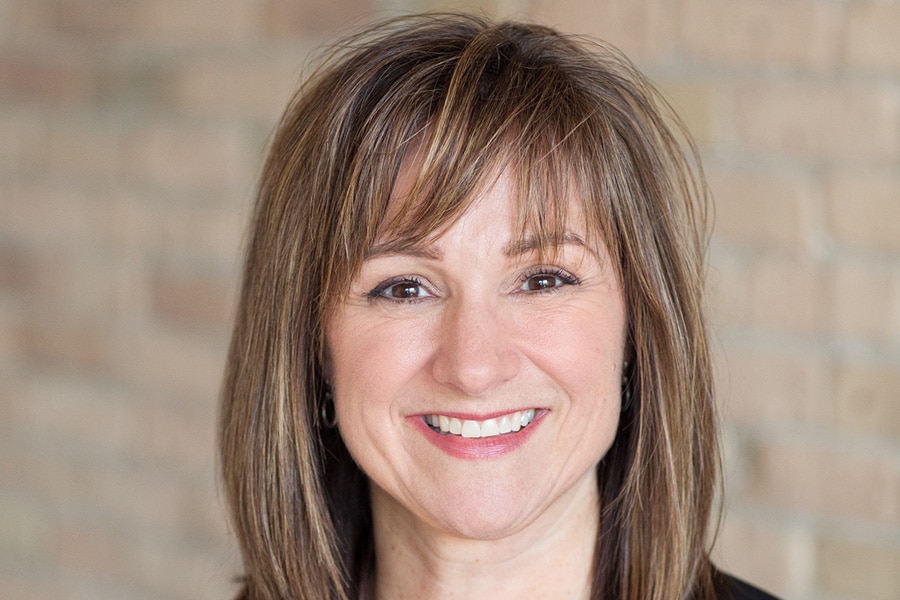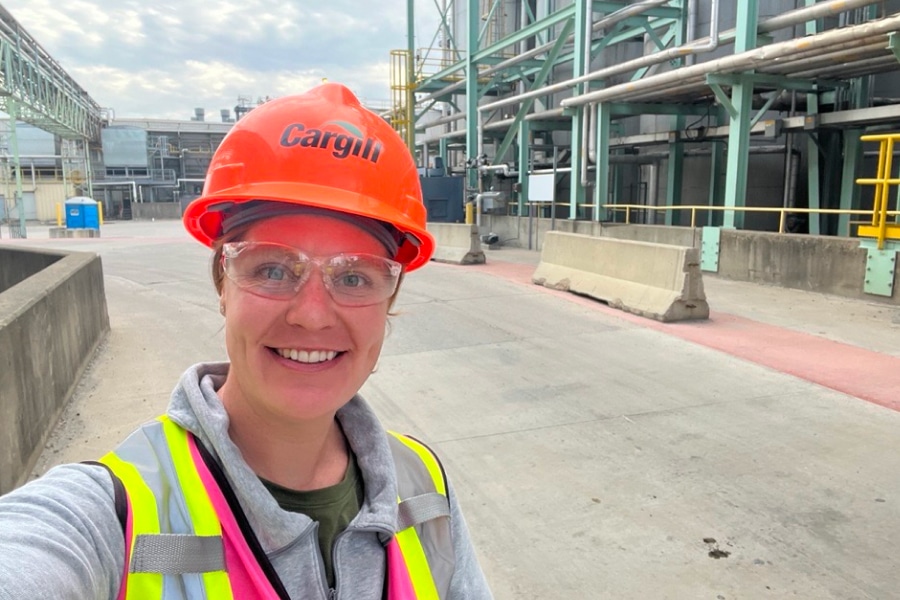JLG Architects, which began in 1989 as a small company with big ideas, has become a highly respected design firm. It specializes in education, health care, sports and community and civic projects, and has more than 200 employees and nine offices in North Dakota, Minnesota and South Dakota.
The company has been employee-owned since 2014. A sampling of its awards speaks to its talent: Top 100 Design Firms in the U.S. (Building and Design); Top 20 Design Firms (ENR Mountain States); 50 Most Admired Firms in the U.S. (MSN Money); and Best Ice Hockey Arena Architects 2022 and 2023 (Global 100).
CEO Michelle Mongeon Allen started at the company as a project architect 24 years ago, rose through the ranks and was promoted to her current position in 2017. In 2022, she was named Most Admired CEO by the Minneapolis St. Paul Business Journal and a Fellow of the American Institute of Architects (AIA), an honor that only 3% of members have achieved.
Built: How did you get your start in architecture?
Allen: I grew up in a small town in the middle of North Dakota and was the oldest of five. On Sundays my family would load up the station wagon, attend church and then go to the local Tasty Freeze. We didn’t have the internet, but we had the Fargo Forum newspaper, which we’d buy and tear apart. My brothers would take the sports and the comics, and I’d grab the lifestyle section. I couldn’t wait to see the floor plan of the week. I innately understood how to read one. I’d close my eyes, picture the room and think about what I would do differently. Looking back, it’s obvious what I was meant to do.
Curious why 3 million AECO professionals worldwide use Bluebeam to finish projects faster?

Later, an older friend I looked up to was studying architectural drafting. I started to research architecture and did a senior paper on it. It was the post-Cold-War period, when there was a push for women to go into engineering, and I was good in math and science. I enrolled in North Dakota State University for engineering, and at one point I took a class in the history of architecture. The first day of class the skies opened and the angels started to sing, and I knew that architecture was going to be my vocation. I felt it viscerally. I changed my major, and after graduating worked for YHR Partners in Fargo for seven years.
Built: Who is someone who inspired you to work in the industry and why?
Allen: Lonnie Laffen, one of the two co-founders of JLG. I met him at AIA and was drawn to his work. Even though I was settled and had a job, I loved the firm he was building. I sold my house, packed up my dog and moved to Grand Forks to work at JLG. I wanted to be part of that energy.
Built: What’s the best advice you’ve gotten about the field?
Allen: What we do is complex. We gather a lot of information from a lot of stakeholders, and we have to interpret and interpolate that for our clients. What we bring to our clients is our gift for interpreting it all. I had a client who was a former classmate. I don’t know if we were being over-diplomatic in how we were trying to explain something, but he just said, “Michelle, we hire you to have an opinion.” (As in, don’t be apologetic about it.) “We want you to lead and guide us. Yes, you may have to sort through all this stuff for us, but your advice is valuable.” That was very impactful to me; it was a reminder that we are hired to be advisors.
Built: What’s your favorite part of the job?
Allen: In this role, it’s crafting the growth of the company as a design problem, taking those innate design “thinking” capabilities and talents and applying them to a building problem or a “company” problem.
Built: What advice do you have for people looking to follow in your career footsteps?
Allen: Be positive and helpful. We all depend on others for our success, so supporting others is in our own best interest. Also, know that there will be seasons of sacrifice, which is not true just of architecture. You have to push through. Try to measure what you’re doing through a sense of satisfaction vs. trying for an equal parsing out of minutes.
Built: What do you think is the most pressing issue facing the industry and why?
Allen: Commoditization, the sense that the field is relegated to being simply a necessary means to an end; that what we do is build, or design, a building, vs. the view that architects are design thinkers who partner with our clients in driving successful mission and business outcomes. As an industry, we need to make sure we continue to be elevated and seen as really important strategic partners to our clients, not as this commodity, vendor-type service.
Built: What keeps you up at night as an executive?
Allen: Making sure that we are sustainably growing the company. We’ve worked hard to build a firm that attracts top talent and gives them a place to build a career with unlimited opportunity without having to flee the upper Midwest. Growth creates opportunity. So, continually thinking about how we grow our company in a way that aligns with our vision and values as an organization is definitely what keeps me up at night.
Built: How do you structure your time to fix the most important issues you face in your role?
Allen: Through planning. I take the time to identify priorities. I set really clear goals and expectations, and then I schedule my time and make sure I’ve got time blocks to actually put the energy and the effort toward advancing those solutions. In a growing company, there’s a big difference between being in a constant state of change, which is what we are, and being in a constant state of chaos. Methodical, intentional planning is the difference between the two. I’m an exceptional planner, and I try to use that to my greatest advantage and the company’s greatest advantage.











